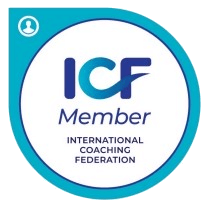Physician Team Communication Skills: Using the DISC Model to Transform Medical Team Dynamics
Physician Team Communication Skills: The Missing Link in Medical Education
It’s 3 AM in the emergency department. Two trauma cases arrive at once. Team A operates like a well-oiled machine with clear instructions, seamless coordination, zero wasted words. Team B stumbles: orders are misunderstood, tensions flare, and seconds slip away. The difference isn’t clinical expertise, it’s communication.
As a physician, you’ve spent years perfecting patient interactions: delivering bad news, calming anxious families, and translating medical jargon. But when it comes to collaborating with colleagues, many of us rely on instinct rather than strategy. The result? A staggering 67% of medical errors trace back to communication failures among providers. These aren’t failures of knowledge, they’re failures of connection.
Let’s explore how mastering physician team communication skills can elevate patient care, reduce burnout, and create healthier workplaces—starting with a tool you’ve likely never been taught: the DISC model.
Why Effective Team Communication Matters in Healthcare
Healthcare is a high-stakes team sport. Nurses, specialists, administrators, and techs each bring unique perspectives and communication preferences. Yet medical training rarely addresses how to navigate these differences. Consider:
- 80% of healthcare workers report conflicts with colleagues, often rooted in miscommunication.
- 43% of physicians say poor team dynamics contribute to burnout.
- Teams with strong communication see 30% fewer errors and 41% shorter hospital stays (Journal of Patient Safety).
The message is clear: Technical excellence isn’t enough. To thrive, we must learn the art of adaptive communication.
Understanding the DISC Model for Medical Team Dynamics
Developed from decades of behavioral research, the DISC model categorizes communication styles into four types. Each has strengths and blind spots and each thrives under different conditions.
The Four DISC Communication Styles in Healthcare
1. Dominance (D): The Decisive Leader
– Traits: Direct, results-driven, thrives on challenges.
– Medical context: The physician who says, “Give me the facts—what’s the fastest path to resolution?”
– Adaptation tip: Be concise. Focus on outcomes, not process.
2. Influence (I): The Collaborator
– Traits: Enthusiastic, relationship-focused, big-picture thinker.
– Medical context: The ER doc who rallies the team with humor during a crisis.
– Adaptation tip: Start with personal connection before diving into logistics.
3. Steadiness (S): The Stabilizer
– Traits: Patient, supportive, avoids conflict.
– Medical context: The nurse who ensures everyone feels heard during rounds.
– Adaptation tip: Provide reassurance and time to process changes.
4. Conscientiousness (C): The Analyst
– Traits: Detail-oriented, methodical, values accuracy.
– Medical context: The radiologist who triple-checks imaging findings.
– Adaptation tip: Lead with data and logical steps.
The key?* No style is “better,” but mismatched styles create friction. Imagine a Dominant attending barking orders at a Steady resident who needs time to reflect. Or an Influential nurse’s brainstorming met with an Analyst’s skepticism. Recognizing these patterns is the first step to fixing them.
Practical Communication Strategies for Healthcare Professionals
Consider this real-world scenario: A physician presents a meticulously researched protocol change to a hospital director. Despite solid evidence, the proposal is rejected. Why? The director, a Dominant style, wanted a 60-second summary emphasizing ROI—not a 15-page report.
Sound familiar? In healthcare, how you communicate often matters as much as what you communicate.
Real-World Applications for Physician Leaders
1. Diagnose Styles Quickly:
– D: Asks “What’s the bottom line?”
– I:Starts conversations with personal updates.
– S: Seeks consensus; uses phrases like “Let’s think carefully.”
– C: Requests detailed data upfront.
2. Flex Your Approach for each stlye:
– D: “Here’s the problem and my recommended action.”
– I: “Your insight on this would be invaluable.”
– S: “Let’s discuss how this change benefits the team.”
– C: “Here’s the data supporting Option A vs. B.”
3. Prevent Miscommunication Landmines:
– Rounding: Let Dominant colleagues lead with solutions; give Conscientious types advance agendas.
– Handoffs: For Steady team members, emphasize continuity (“This aligns with our current process…”).
– Conflict: Influence styles may need to vent emotions first; Analysts want structured problem-solving.
Your Action Plan: Building a Communication-Savvy Team
1. Start with Self-Awareness: Sign up for physician coaching or an online course and take the DISC assessment and discover you communication style. Discover your default under stress?
2. Map Your Team: Jot down colleagues’ likely styles. Notice patterns during your next shift.
3. Practice “Style Switching”: Try one adaptation daily. Example: If you’re a C, share a concise update with a D attending.
4. Normalize the Conversation: “I realize we approach things differently—how can we align here?”
The Ripple Effect: Better Physician Team Communication Skills, Better Medicine
When teams communicate effectively:
– Medication errors drop by 50% (AHRQ).
– Staff retention improves, one health system cut nurse turnover by 30% after communication training.
– Diagnostic accuracy rises as diverse perspectives are heard.
Investing in these skills isn’t “soft’, it’s strategic. Patients deserve teams that collaborate as expertly as they intubate.
Remember: The best clinicians don’t just treat patients. They connect, adapt, and lead—one intentional conversation at a time.
Want to learn more about adapating your communication style? Download our free “Healthcare Communication CheatSheet” for scripts, style guides, and crisis communication strategies.





